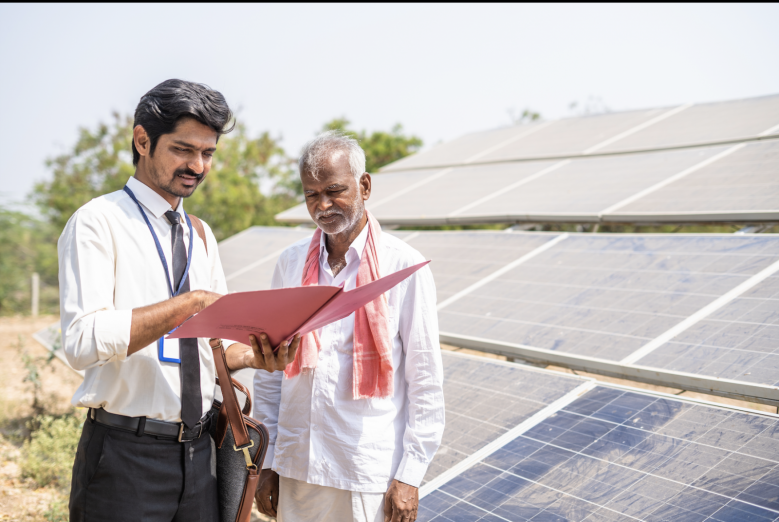
Article Series: USAID’s Energy Development Partnerships in South Asia for a Dynamic Indo-Pacific
Originally published in September 2, 2022.
This blog was published in Powerline Magazine and Climatelinks platform as part of an article series titled, “Catalysing South Asia’s Clean Energy Transition”. The initiative was led by United States Energy Association under USAID/India stewardship and first published in Powerline Magazine followed by republication on USAID's Climatelinks platform.
Drafted by: John Smith-Sreen, Director Indo-Pacific Office, USAID/India
There is a famous African proverb, “If you want to go fast, go alone. If you want to go far, go together.” This proverb is truer now than ever. The world is deeply connected and incredible opportunities come with challenges that can only be solved by nations working together. Partnership is key.
Nowhere is this cooperation more essential than in the Indo-Pacific, the most dynamic region in the world. The region has the fastest growing population and markets in the world and currently accounts for 60 per cent of global energy demand. We must forge coalitions that reach beyond political and ideological boundaries to confront transnational challenges, including the climate crisis and emerging public health threats. Together we can ensure stability amidst rising energy demand and a shifting security and economic landscape.
The Indo-Pacific Strategy, released in February 2022, outlines President Biden’s vision of anchoring the United States in the Indo-Pacific and strengthening the region in the process. It aims to deliver on the U.S. government’s vision of an open, connected, prosperous, secure and resilient Indo-Pacific by 2050 through sustained, creative collaboration with allies, partners and institutions, both within the region and beyond it. The strategy captures U.S. ambitions as well as the ambitions of our allies and partners. It encompasses input from other governments, communities, the private sector, civil society and our developmental partners. Replicating and scaling up excellent development models that have been tried and tested in India is an important component of our strategic approach.
USAID/India serves as the South Asian hub for our work supporting a free and open Indo-Pacific. Our energy programming and partnerships are the cornerstone of that work. USAID/India supports a clean energy transition, systemic reforms, expanded economic development, increased private sector participation and new regional investments, expanding regional trade, and cross-border energy cooperation. South Asia’s diversity and immense growth and investment potential, when paired with India’s regional leadership, can drive the region’s future success.
Ushering in an energy-secure South Asia with regional power markets
Electricity demand will grow rapidly in the coming decades and South Asia currently has the least integrated power system in the world, although energy trade has more than doubled since 2012 and now stands at approximately 2,900 MW.
USAID’s work is built upon using cooperation and collaboration to create an integrated, energy secure South Asia that is resilient, peaceful and prosperous. We have been promoting and supporting cross-border electricity trade in South Asia since 2000. USAID works closely with policymakers, energy sector experts and stakeholders from Bangladesh, Bhutan, India, Nepal, the Maldives and Sri Lanka. We are helping to create a workforce qualified for jobs in the green energy sector. Last year, our programming trained 3,626 regional energy leaders.
Our work includes improving transmission and distribution, supporting the clean energy trade, and fostering energy efficiency. USAID also works on energy regulation, statistics, renewable energy integration and developing private sector engagement. In April 2021, Nepal became the first country to trade on the Indian Energy Exchange’s Day-Ahead platform. This January, Bhutan, enabled by USAID, also joined the Indian market. Through its participation, Bhutan avoided a power shortfall during the winter months when energy demand increased, while domestic hydropower generation fell.
Strengthening joint developmental partnerships with India
India has a profound role to play, not just in its own neighbourhood, but around the world. For 75 years, India’s legacy of support and cooperation has grown and strengthened. The Indo-Pacific strategy prioritizes “supporting India’s continued rise and regional leadership” as a key facet of our drive to build collective capacity. We have redefined how we collaborate with the Government of India to expand innovation, mobilize domestic resources and address regional and global development challenges. Our collaboration focusing on climate change mitigation also increases access to clean, reliable and affordable power for all South Asian countries. Our past work in India focusing on adaptation to climate change has advanced food security and environmental sustainability not just for India, but also for Africa and Asia. Over 750,000 farmers in Africa and Asia have benefited from the technologies and climate change-resilient farming techniques introduced by USAID/India.
In partnership with the U.S. International Development Finance Corporation, we are supporting a $41 million loan guarantee portfolio to mobilize investments for small and medium-sized Indian enterprises in renewable energy solutions. We collaborate with India’s Ministry of Power to deploy 250 million smart meters, the largest smart-meter program in the world. Through regional projects such as the South Asia Regional Energy Partnership, the South Asia Group for Energy and the South Asia Regional Initiative for Energy Integration, we are strengthening the capacity of our partners to scale up clean energy, while reducing emissions and championing climate action.
Conclusion
Over the next several years, USAID will further deepen its energy partnerships in South Asia to create a connected, resilient and energy-secure Indo-Pacific.
